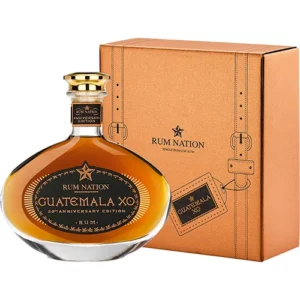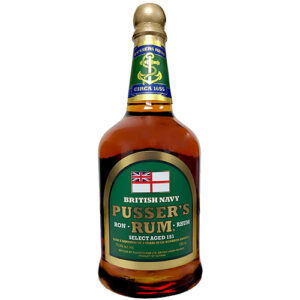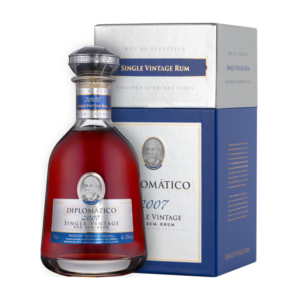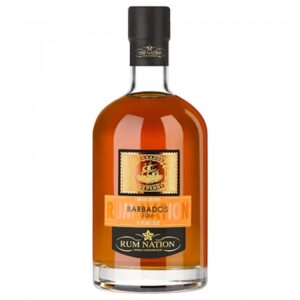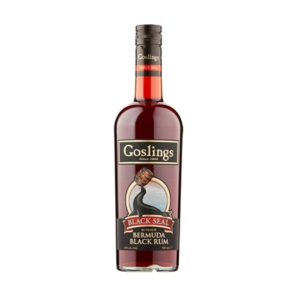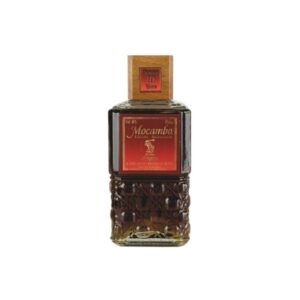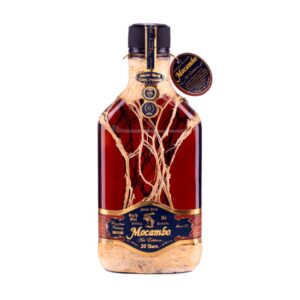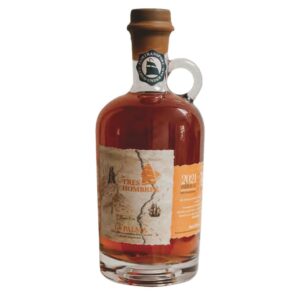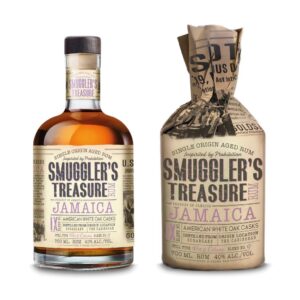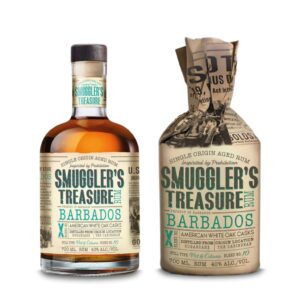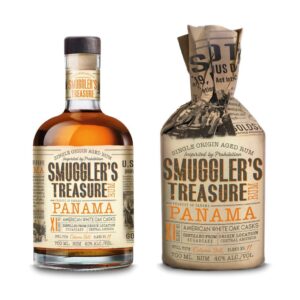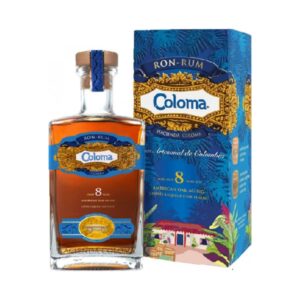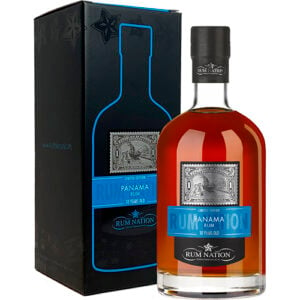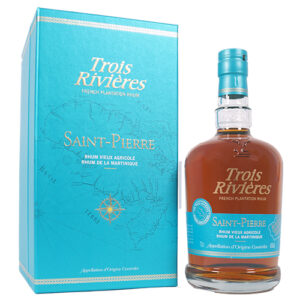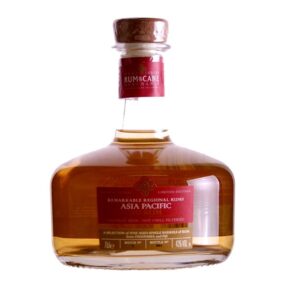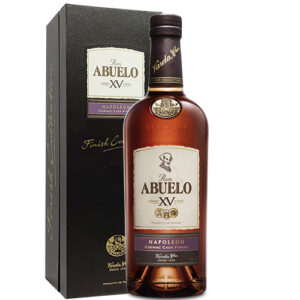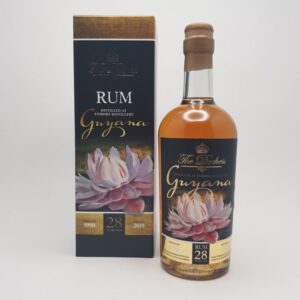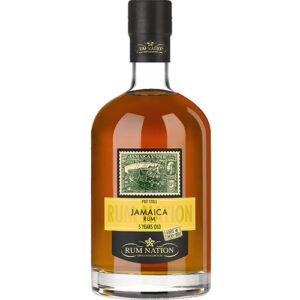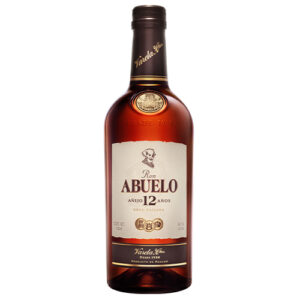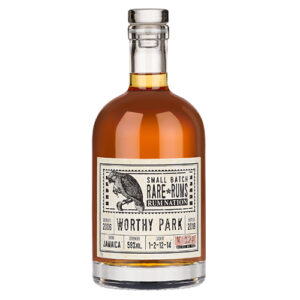- You cannot add that amount to the cart — we have 1 in stock and you already have 1 in your cart. View cart
Showing 1–24 of 210 resultsSorted by popularity
Dark Rum – The Complete Guide
TL;DR: In Short
- Dark rum is characterized by its rich amber to deep mahogany color and robust flavor profile
- Primarily produced from molasses and defined by extended aging in charred oak barrels
- Available in several styles, including Jamaican, Demerara, and Navy Style
- Best enjoyed neat or in classic cocktails like the Mai Tai or Dark ‘n Stormy
Disclaimer: This guide is intended for informational purposes for adults 21 and over. Vault of Spirits encourages responsible alcohol consumption.
Introduction to Dark Rum
Dark rum has a rich history and fascinating craftsmanship behind it. From its origins in the Caribbean to its global popularity today, this spirit has evolved to become one of the world’s most treasured.
This guide provides insight into the production, flavor notes, and enjoyment of dark rum, whether you’re a novice or experienced enthusiast.
With its deep colors ranging from amber to mahogany and complex flavor profiles featuring notes of caramel, toffee, spice, and tropical fruits, dark rum offers a delightful journey for the palate.
How Did Dark Rum Originate?
From Past to Present
Dark rum traces its roots to the Caribbean sugar plantations of the 17th century, where it began as a way to utilize molasses, a byproduct of sugar production.
Initially considered a crude spirit consumed by sailors and slaves, rum quickly grew in popularity. By the 18th century, it had become an essential trade commodity and played a significant role in the infamous “Triangular Trade.”
British naval sailors received a daily rum ration, leading to the development of Navy-style dark rums, known for their full body and high proof.
Which Historical Milestones Have Shaped Dark Rum?
The British Navy’s adoption of the daily rum ration in 1655, known as the “tot,” significantly influenced dark rum’s development and spread.
In the late 19th century, improved distillation techniques and aging practices elevated dark rum’s quality and reputation, transforming it from a rough sailor’s drink to a respected spirit.
Prohibition in the United States (1920-1933) drove rum production underground in some areas while boosting it in others, particularly in Cuba and the Caribbean.
The tiki culture explosion of the 1940s and 50s brought dark rum into the spotlight through exotic cocktails, cementing its place in modern mixology.
How Has Dark Rum Influenced Cultural Traditions?
In Jamaica, rum is deeply woven into everyday life and celebrations, with specific dark rums served during religious ceremonies and festive occasions.
Guyana’s Demerara rum became a symbol of national pride, representing centuries of distilling tradition and craftsmanship.
“Black Tot Day” (July 31, 1970), when the British Navy ended its rum ration, is still commemorated by rum enthusiasts worldwide.
Caribbean carnival celebrations feature rum prominently, with traditional punches and cocktails made from local dark rums.
Why Is Dark Rum Popular Today?
Dark rum has experienced a renaissance as part of the craft spirits movement, with connoisseurs appreciating its complexity similar to fine whiskey or cognac.
Bartenders have embraced dark rum for its versatility and depth, creating both classic and innovative cocktails that showcase its rich character.
The rise of rum tourism in the Caribbean has increased awareness and appreciation for authentic dark rums with specific regional characteristics.
Consumers increasingly value the story and tradition behind their spirits, which dark rum delivers through its colorful history and cultural significance.
How Is Dark Rum Produced?
Which Raw Materials Are Used in Production?
Dark rum production begins with carefully selected raw materials that form the foundation of its distinctive character.
Primary ingredients:
- Molasses – The thick, dark byproduct of sugar refining that provides the deep color and rich flavor base
- Water – Often sourced locally, with mineral content affecting fermentation and final taste
- Yeast – Special strains that determine fermentation style and contribute unique flavor compounds
Some producers also incorporate cane juice or sugar cane syrup alongside molasses, creating more complex flavor profiles in their dark rums.
How Does the Fermentation Process Work?
Fermentation transforms the sugars in molasses into alcohol through the action of yeasts, fundamentally shaping dark rum’s character.
Traditional producers often use wild yeasts and longer fermentation times (up to two weeks), creating more complex congeners that contribute to the rich flavor profile.
Many Jamaican dark rums utilize a technique called “dunder,” adding residue from previous distillations to the fermentation, producing powerful esters and funky notes.
Temperature control during fermentation is crucial, with warmer climates naturally supporting rapid yeast activity and developing tropical fruit notes characteristic of Caribbean rums.
Which Distillation Techniques Are Used?
Distillation concentrates and refines the fermented wash, with different methods yielding distinctive styles of dark rum.
Common distillation methods:
- Pot Still Distillation – Traditional method producing heavier, more flavorful rums with greater congener content
- Column Still Distillation – Creates lighter spirits that require longer aging to develop dark rum characteristics
- Hybrid Approaches – Many distilleries combine both methods, blending the resulting spirits for complexity
Distillers carefully control “cuts” during the distillation process, selecting which portions of the distillate to keep based on desired flavor profiles.
What Is the Significance of Aging?
Aging transforms clear distillate into dark rum through extended contact with wood, typically charred oak barrels.
The tropical climates of traditional rum-producing regions accelerate aging, with one year in the Caribbean equivalent to approximately three years in cooler climates.
During aging, the spirit extracts vanillins, tannins, and other compounds from the wood while oxidation reactions create new flavor components.
Many dark rums are matured in previously used bourbon, cognac, or sherry casks, which impart additional flavor characteristics.
Most premium dark rums are aged between 5 and 12 years, though some exceptional examples may mature for 20+ years.
Which Regions Are Known for Dark Rum?
Where Are the Best Varieties Produced?
The Caribbean islands dominate dark rum production, each bringing unique characteristics to their spirits.
Jamaica produces intensely flavored dark rums with distinctive “funk” (locally called “hogo”), featuring tropical fruit, banana, and spice notes.
Guyana (Demerara rum) creates heavier, smokier dark rums using traditional wooden pot stills, some dating back to the 18th century.
Barbados offers well-balanced dark rums that combine richness with accessibility, often showing dried fruit and vanilla characteristics.
Trinidad specializes in medium-bodied dark rums with exceptional smoothness, traditionally used as the backbone for many premium blends.
How Do Geography and Climate Affect the Flavor?
Tropical climates accelerate both fermentation and barrel aging, intensifying flavor development in a shorter time period.
Coastal distilleries often report that sea air influences their rum during aging, potentially adding subtle saline notes.
Local water sources impact fermentation, with Jamaica’s limestone-filtered water contributing to the distinctive character of its dark rums.
Traditional open-air fermentation allows ambient yeasts and bacteria from the surrounding environment to influence flavor development.
What New Trends Are Seen in Dark Rum Production?
Craft distillers globally are creating new interpretations of dark rum, sometimes incorporating regional ingredients or alternative aging methods.
Barrel finishing in wine, port, or exotic wood casks is increasingly popular, adding complexity and novelty to traditional dark rum profiles.
Some producers are reviving historical production methods, such as pot still distillation and longer fermentations, to create more character-driven spirits.
Transparency in production methods and ingredient sourcing is becoming more important as consumers seek authenticity and craftsmanship.
What Do the Different Quality Designations Mean?
Age statements (when provided) typically reflect the youngest rum in the blend, though practices vary by country.
“Solera” aged rums use a fractional blending system where younger rums are gradually introduced to barrels containing older rums.
Many countries have specific classifications: “Jamaica Rum” must be produced and aged in Jamaica; “Demerara Rum” must come from Guyana’s Demerara River region.
Terms like “Extra Añejo,” “Gran Reserva,” or “Premium” often lack standardized definitions and vary between producers.
How Does Dark Rum Taste?
What Characterizes the Typical Flavor Profile?
Dark rum offers a rich, complex flavor experience that balances sweetness with depth and character.
Typical aromas:
- Sweet Notes – Caramel, molasses, brown sugar, toffee, vanilla
- Fruit Elements – Dried fruits, banana, tropical fruits, citrus peel
- Spice Components – Cinnamon, nutmeg, clove, black pepper
On the palate, expect a full-bodied mouthfeel with moderate to high sweetness balanced by oak tannins and warm alcohol presence.
The finish typically features lingering warmth with notes of baking spices, dark chocolate, coffee, or tobacco depending on the style.
How Does the Flavor Vary Between Different Styles?
Jamaican dark rums offer intense “funky” notes with tropical fruit esters, creating a distinctive profile often described as having “hogo” (from the French “haut goût” or high taste).
Demerara rums from Guyana present rich, smoky characteristics with notes of burnt sugar, leather, and exotic spices.
Navy-style dark rums typically feature higher alcohol content with robust molasses sweetness, dried fruits, and pronounced oak influence.
Spanish-style dark rums (from Cuba, Dominican Republic) tend to be drier and lighter, with more refined oak integration and subtle spice notes.
How Does the Flavor Develop with Age?
Young dark rums (2-5 years) typically feature more prominent molasses sweetness with straightforward caramel and vanilla notes.
Mid-aged examples (6-12 years) develop greater complexity, with dried fruit notes emerging and rough edges softening as the spirit integrates with oak influences.
Well-aged dark rums (12+ years) offer sophisticated profiles with tertiary flavors like tobacco, leather, dark chocolate, and coffee emerging as primary sweetness recedes.
Extended tropical aging creates intense concentration due to higher evaporation rates, known as the “angel’s share,” resulting in richer, more powerful flavors.
What Signs Reveal High Quality?
Superior dark rums display balance between sweetness, oak, and alcohol, with no single element dominating the experience.
Complex aromatic layers that evolve in the glass indicate thoughtful production and proper aging.
A smooth, lingering finish without harsh alcohol burn suggests proper distillation and maturation.
Minimal added sugar allows the natural flavors to shine through, though some sweetening is traditional in certain styles.
Authentic regional character that reflects traditional production methods rather than artificial additives or flavoring.
How Is Dark Rum Best Enjoyed?
What Is the Optimal Serving Method?
Premium dark rums reward neat sipping, allowing you to experience their full complexity without dilution.
A small splash of room temperature water can open up the aromas and soften the alcohol presence in higher-proof expressions.
For casual enjoyment, serving over a large ice cube provides moderate dilution while maintaining the rum’s essential character.
In cocktails, dark rum shines as the central character rather than a supporting player, particularly in tiki and tropical drinks.
Which Glass and Temperature Are Ideal?
A tulip-shaped snifter or Glencairn glass concentrates aromas while allowing swirling to release volatile compounds.
For casual sipping, a rocks glass works well, especially when serving with ice.
Dark rum shows best slightly below room temperature (60-65°F/15-18°C), avoiding excessive chilling that can mask subtle flavors.
Allow refrigerated bottles to warm slightly before serving to experience the full aromatic range.
How Do You Taste Like an Expert?
Begin by examining the color, noting depth and hue that can indicate age and barrel influence.
Swirl gently and observe the “legs” or “tears” on the glass – thicker, slower-moving legs often suggest higher viscosity and potential richness.
Approach aromas gradually: first from a distance, then with your nose just above the glass rim, and finally with deeper inhalations to detect different aromatic layers.
Taste with a small sip, allowing the rum to coat your entire palate. Notice the progression from initial impact (attack) through development (mid-palate) to the finish.
Consider key attributes: sweetness level, body/mouthfeel, dominant flavor notes, complexity, balance, and length of finish.
Which Dishes Complement Dark Rum?
Dark chocolate desserts enhance rum’s cocoa notes while providing contrasting bitterness to balance the spirit’s sweetness.
Bread pudding with caramel sauce creates delightful flavor harmony with the caramel and vanilla notes in aged dark rum.
Spiced grilled meats, particularly pork or duck with fruit glazes, complement the spirit’s rich character and spice notes.
Traditional Caribbean dishes like jerk chicken or oxtail stew offer authentic pairings that highlight rum’s cultural context.
Aged cheeses, particularly those with nutty or caramel notes like Gouda or Comte, create sophisticated pairings with premium dark rums.
Which Cocktails Can Be Made with Dark Rum?
Which Classic Cocktails Should You Know?
Mai Tai
Ingredients: 2 oz dark Jamaican rum, 0.5 oz orange curaçao, 0.75 oz fresh lime juice, 0.5 oz orgeat syrup, 0.25 oz simple syrup
Preparation: Shake all ingredients with ice, strain into a double old-fashioned glass over crushed ice, garnish with mint sprig and lime shell.
History: Created by Victor “Trader Vic” Bergeron in 1944, the original recipe highlighted the complexity of aged Jamaican rum.
Dark ‘n Stormy
Ingredients: 2 oz dark rum (traditionally Gosling’s Black Seal), 4 oz ginger beer, lime wedge
Preparation: Fill a highball glass with ice, add rum, top with ginger beer, and garnish with lime.
History: Originated in Bermuda after World War I, this simple highball is now a trademarked cocktail when made with Gosling’s Black Seal rum.
Which Modern Cocktails Are Worth Trying?
Jungle Bird – A balanced combination of dark rum, Campari, pineapple juice, lime juice, and simple syrup that showcases rum’s ability to stand up to bitter components.
Kingston Negroni – A rum-based twist on the classic Negroni, substituting dark Jamaican rum for gin while keeping Campari and sweet vermouth.
Rum Old Fashioned – A simple yet effective showcase for premium dark rum, using just sugar, bitters, and a twist of orange to enhance the spirit’s complexity.
Black Manhattan – Replaces whiskey with dark rum in this modern classic, paired with amaro instead of sweet vermouth for a deeply complex cocktail.
How Is Dark Rum Enjoyed Neat?
Sipping neat in a proper rum glass allows you to appreciate the full spectrum of flavors developed through fermentation, distillation, and aging.
Adding a few drops of water can “open up” higher-proof dark rums by releasing volatile compounds and reducing the alcohol sensation.
A single large ice cube provides gradual dilution while maintaining lower temperature, evolving the flavor experience as you sip.
Traditional Caribbean service often includes a water back to cleanse the palate between sips.
Which Homemade Variations Can You Experiment With?
Rum infusions with spices like cinnamon, vanilla, or star anise can create custom spiced rum variations with more depth than commercial versions.
Homemade rum cream liqueurs combine dark rum with sweetened condensed milk, vanilla, and coffee for a delicious after-dinner treat.
Dark rum can be used in culinary applications like rum-soaked cakes, homemade ice cream, or bananas foster to create boozy desserts.
Custom rum blending allows enthusiasts to combine different dark rums to create personalized profiles that balance various characteristics.
What Should You Know Before Buying Dark Rum?
Which Details Should You Pay Attention to When Buying?
Look for information about origin and distillery, as these indicate production methods and potential flavor profiles.
Check for age statements, though be aware that tropical aging progresses faster than continental aging.
Note the ABV (alcohol by volume) percentage – higher proofs often preserve more flavor compounds but may require dilution for full appreciation.
Be skeptical of excessive marketing language – terms like “ultra-premium” or “special reserve” are unregulated and don’t necessarily indicate quality.
Research whether additives like caramel coloring or sugar have been added, as some countries permit these without disclosure.
What Do You Get for Your Money in Different Price Ranges?
Entry-level dark rums ($15-25) offer solid mixing options with basic molasses and caramel notes, though they may lack complexity for neat sipping.
Mid-range offerings ($25-50) provide good value, often delivering age-worthy character and complexity suitable for both cocktails and occasional neat consumption.
Premium dark rums ($50-100) present significant aging, distinctive regional character, and sophisticated flavor profiles ideal for contemplative sipping.
Ultra-premium expressions ($100+) showcase extraordinary aging, rare production techniques, or limited editions that appeal to collectors and connoisseurs.
How Is Dark Rum Properly Stored?
Store bottles upright to prevent the high-proof spirit from degrading the cork over time.
Keep away from direct sunlight and heat sources, as these can accelerate chemical changes and potentially degrade flavors.
Maintain a consistent temperature; excessive temperature fluctuations can expand and contract the liquid, forcing air through the cork.
Once opened, bottles are best consumed within 1-2 years to enjoy optimal flavors, though properly sealed dark rum will remain stable for many years.
For long-term storage of premium bottles, consider using wine preservers or transferring to smaller bottles to minimize air exposure.
Is Dark Rum a Good Investment?
Limited edition releases from prestigious distilleries like Appleton, El Dorado, or Mount Gay can appreciate significantly in value.
Discontinued expressions or those with historical significance often become collector’s items, particularly if they represent traditional production methods.
Independent bottlings of rare casks from closed distilleries can be excellent investment opportunities for knowledgeable collectors.
Unlike wine, properly sealed spirits don’t continue to mature in the bottle, so investment value relies on rarity and demand rather than improvement with time.
Which Brands Do We Recommend?
What’s Best for Beginners?
Appleton Estate Signature Blend offers an accessible entry point to Jamaican rum with moderate funk and good balance.
Mount Gay Eclipse from Barbados provides a smooth introduction with notes of vanilla, banana, and light spice.
Gosling’s Black Seal presents rich molasses character that works beautifully in cocktails while remaining approachable for new rum drinkers.
Diplomatico Reserva Exclusiva is a sweeter Venezuelan rum that appeals to beginners with its chocolate, toffee, and fruit-forward profile.
What Will Impress Enthusiasts?
Appleton Estate 12 Year Rare Casks offers complex tropical fruit notes with perfect balance between sweetness and oak.
El Dorado 15 Year showcases the distinctive character of Demerara rum with exceptional depth and smoky notes.
Foursquare Exceptional Cask Selections represent the pinnacle of Barbadian rum craftsmanship with various limited edition expressions.
Hamilton Jamaican Pot Still Black provides intense “funky” Jamaican character that enthusiasts seek, with minimal additives.
Which Bottles Are Most Sought After?
Black Tot Last Consignment contains the final official British Royal Navy rum ration, representing a piece of rum history.
Appleton Estate 50 Year Independence Reserve was released in 2012 to celebrate Jamaica’s independence and is extremely rare.
El Dorado 25 Year showcases exceptional age while maintaining balance, becoming increasingly difficult to find.
Caroni distillery bottlings (closed in 2002) from Trinidad have achieved cult status among collectors for their unique heavy, slightly industrial character.
Where Do You Get the Most for Your Money?
Plantation XO 20th Anniversary offers exceptional complexity and smoothness at a mid-premium price point.
Appleton Estate 8 Year Reserve provides authentic Jamaican character and age-statement quality at an accessible price.
Hamilton 86 Demerara delivers authentic Guyanese rum character at a mixing-friendly price while being complex enough for sipping.
Doorly’s XO from Foursquare Distillery offers exceptional craft at a reasonable price, showcasing Barbadian rum excellence.
Frequently Asked Questions
What Is Dark Rum?
Dark rum is a rich, full-bodied spirit distilled from sugarcane byproducts (primarily molasses) and aged in charred oak barrels, which impart its characteristic deep amber to mahogany color.
It typically features flavor notes of caramel, molasses, tropical fruits, and warming spices, developing complexity through extended aging.
How Is Dark Rum Produced?
Production begins with fermenting molasses using specific yeast strains, sometimes employing traditional methods like “dunder” for added complexity.
The fermented wash is then distilled, traditionally in pot stills for fuller flavor, though column stills or combinations are also used.
The clear distillate matures in charred oak barrels (often ex-bourbon) for years, developing color, flavor, and character from wood interaction and oxidation.
Many dark rums are blended from different aged stocks to achieve the desired flavor profile before bottling.
What Characterizes Dark Rum?
Deep amber to mahogany color derived naturally from barrel aging and sometimes enhanced with caramel coloring.
Rich, robust flavor profile featuring caramelized sugar notes (molasses, toffee, brown sugar) alongside tropical fruits, spices, and oak-derived vanilla.
Fuller body and more intense character compared to white or gold rums, making it suitable for sipping neat or as a dominant cocktail ingredient.
Regional variations that reflect traditional production methods, with distinctive styles from Jamaica, Guyana, Barbados, and other rum-producing nations.
Where Can You Buy Dark Rum?
Well-stocked liquor stores typically carry a selection of dark rums across various price points and styles.
Specialized spirits retailers or rum-focused shops offer broader selections, including rare or independent bottlings.
Online retailers provide access to international brands that may not be available locally, though shipping restrictions vary by location.
Distillery visits in rum-producing regions often present opportunities to purchase exclusive expressions not available in general distribution.

